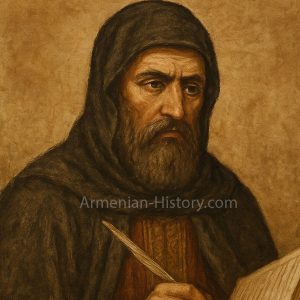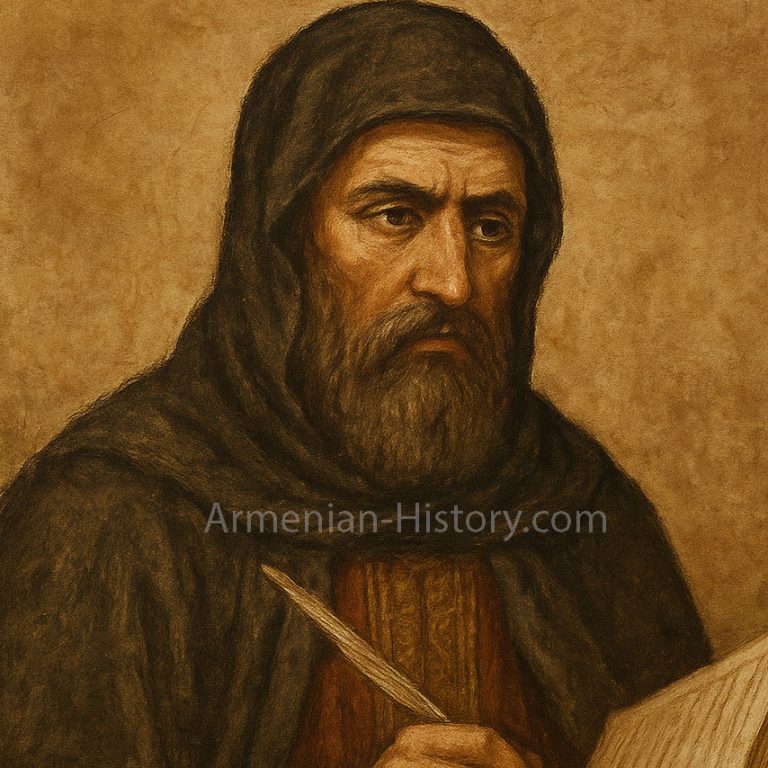Stepanos Asoghik (also known as Stepanos Taronetsi) was a prominent 11th-century Armenian historian and cleric, best known for his work “Universal History” (Patmutyun Tiezerakan). He was born in the region of Taron, a historically significant Armenian area, and was educated within the Armenian Church, eventually becoming a respected member of the scholarly and religious elite.
Asoghik’s “Universal History” is a three-part chronicle. The first part is based on earlier historical compilations, recounting biblical history and ancient civilizations. The second part draws heavily from the works of earlier Armenian historians, especially Movses Khorenatsi, and covers the history of Armenia from its legendary beginnings to the 5th century. The third section provides valuable insights into the political, religious, and social developments of 9th–11th-century Armenia, including the rise of the Bagratuni dynasty and its relations with Byzantium and neighboring Islamic states.
Asoghik’s writing is characterized by a concise and often moralistic tone, typical of medieval Armenian historiography. He emphasized the role of divine providence in human affairs and often used historical narrative as a means of conveying ethical and religious lessons.

His work remains a crucial source for understanding the medieval Armenian worldview, especially the period following the Arab domination and the reassertion of Armenian political autonomy. Though not as detailed as some of his predecessors, Asoghik’s chronicle is valued for its synthesis of prior historical narratives and his contemporary perspective on major events of his time.
Stepanos Asoghik’s contributions helped preserve the collective memory of the Armenian people and affirmed their cultural identity during a time of political uncertainty and transformation. Today, he is remembered as one of the key figures in the Armenian historiographical tradition.

